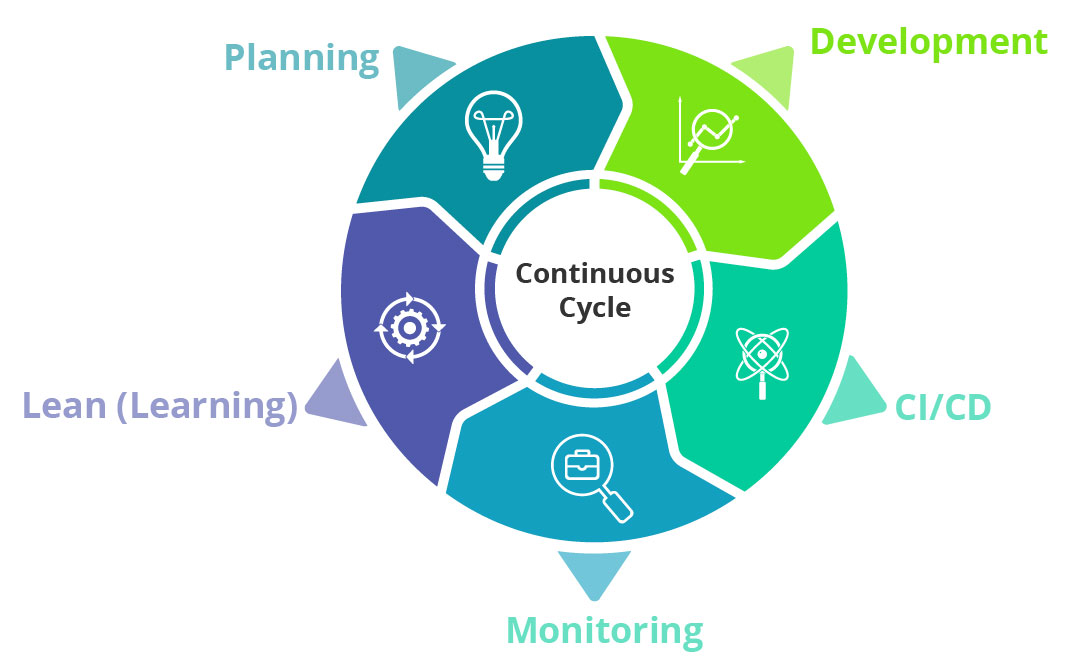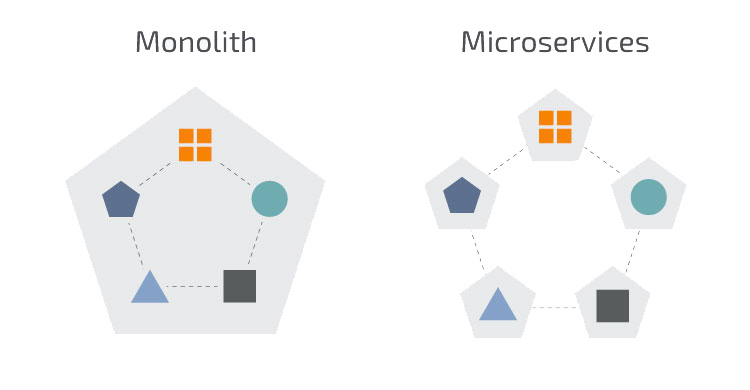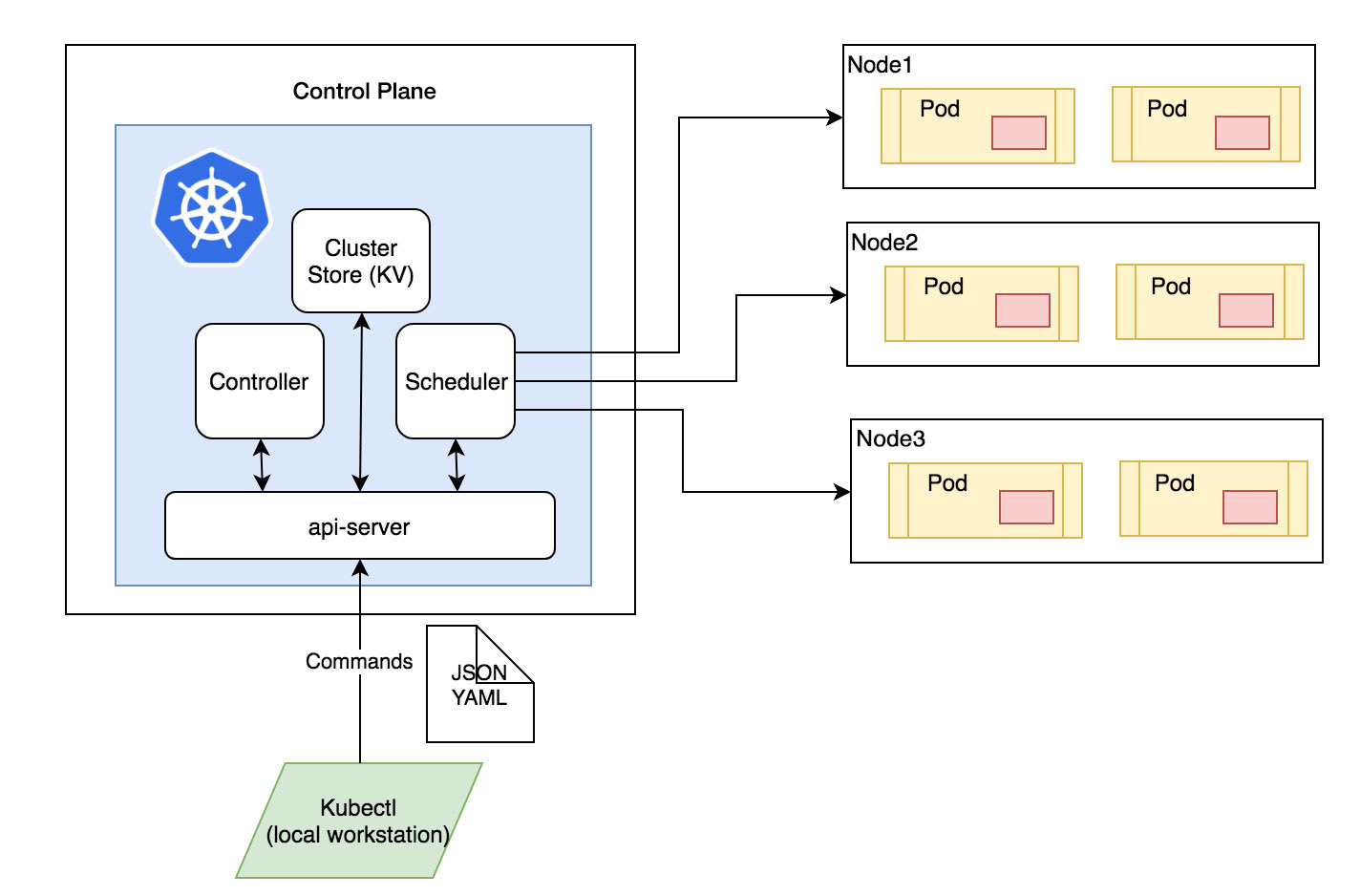Modernize
Modernize the software delivery landscape with the latest DevOps tools and best practices to efficiently run your workloads in the cloud. Improve performance and bring in cost efficiencies by introducing new tools and technologies like IaC, GitOps, containerization, etc. Bring efficiencies with the latest best practices like Blue/Green deployments, unified monitoring, and log analytics.
The Traditional Waterfall Model
A decade or two ago, software was typically built using the waterfall model. The requirements would be gathered in the first phase. Actual software development was done in the second phase. Quality assurance was the next phase. Finally, the release phase would follow after months and years. The problem with the waterfall model is slow iteration.
Agile And Agile-Like Models
The agile software methodology revolutionized software development and delivery. Companies developed ways to deliver quality software early and often. With advent of cloud computing and DevOps modern software development became popular.
Modern software development with DevOps has transformed cultures, tools and methods in software development teams across the globe. The system embraces cloud computing, containers, serverless computing, CI/CD and monitoring.

Modernize Software Delivery
Stage 1: Planning. Modern software development teams have embraced agile software development methodologies to deliver software early and continuously to their customers. Use the right tools and build the right processes to become modern and agile. Plan software development having SRE(Site Reliability Engineering) in mind right from the inception stage.
Stage 2: Software Development. Containers provide a means to package the application and its underlying infrastructure. The de-facto tool to containerize the applications is Docker. In recent years, alternatives to Docker have emerged and are becoming popular such a Podman. Virtual machines and wrappers around virtual machines such as Vagrant offer mirroring of production environment in developer workstations. Using Minikube a developer can run a Kubernetes cluster on their laptop. Embrace virtualization and containerization technologies to modernize your software development workstations.
Stage 2a: Test suite As part of software development processes, developers write unit and integration tests to catch software bugs early in the process.
Stage 3: CI. Continuous integration systems run the test suite when certain events occur such as merging or pushing changes to a Git repository. Jenkins, Github Actions, ConcourseCI, Gitlab, TravisCI are some popular choices in today's DevOps landscape. Build a workflow that suits your business objectives and team's preferences.
Stage 4: CD Once the CI system generates the builds and runs the test suite, the team prepares for delivery of the software to production environment. Software can be deployed to production environment in many ways. Modern deployment tools offer ways to release software with minimal and no disruptions. They offer features such as rollback, gradual rollout of release, etc. Leverage CD tools to manage your release pipelines and efficiently deliver software to your users.
Stage 5: Monitoring Metrics are gathered from infrastructure and the application to continuously monitor the health of the workload. These metrics are used to gain insights into historical trends. They are also used to alert when anomalies are detected. Build dashboards and alerting systems to smoothly run your workloads.
The lean methodology helps reduce waste and improve efficiency to provide more value to customers. Utilizing the modern software development practices deliver quality software and value to your customers in shorter and frequent cycles.
Monolith To Microservices

Splitting a monolith into micro services brings a few benefits to the table. Micro services removes tight coupling. Teams with small number of members can focus on one part of the application. Each team can have their own technology stack.
Kubernetes

Containers and Kubernetes have taken infrastructure and workload management by storm. Many modern teams have embraced containers as the default mode of software development and delivery. Kubernetes has become the de-facto standard in the industry to manage containerized workloads. The Gavika methodology assists your teams to migrate to containers and Kubernetes. We will help you port your applications to run on containers. We will help you deploy your containers to Kubernetes clusters in cloud, on-premise or multi-cloud environments. Our consultancy and managed services do the heavy lifting. We will help you choose between no-ops, low-ops, full-ops and industry standard Kubernetes solutions. The larger Kubernetes ecosystem offers a plethora of tools and technologies to solve storage, networking, scaling, security and deployment complexities. Together with your team, we will help bring processes and systems that is the right choice for your business.
In many of our projects, the application developers didn't have to worry about the underlying infrastructure or the management of Kubernetes clusters. All the developers had to do was to provide a ContainerFile to build container images, CICDFile to provide instructions for the CI/CD pipeline and ChartValues to provide configuration flags to generate the Kubernetes manifests. The rest was done by our DevOps consultants. The main points of delivery for the DevOps team were:
- Orchestrate the baseline IAM, networking, storage and compute infrastructure
- CI/CD system to orchestrate the resources in the cloud including Kubernetes clusters
- CI/CD system for applications to be deployed to the Kubernetes clusters
- Develop and maintain observability and monitoring system revolving around logs, traces and metrics